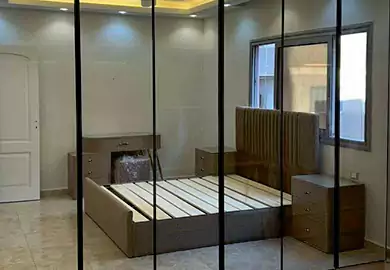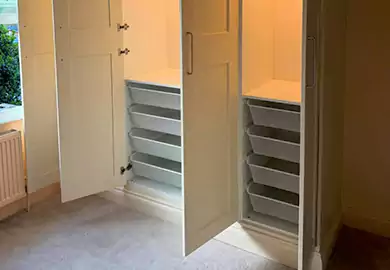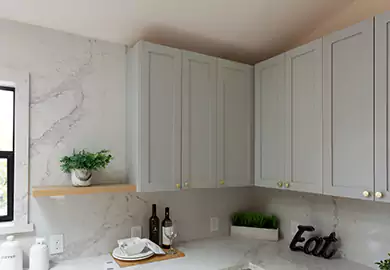It is easy to overlook minor issues around the house until they become major problems. When it comes to the structural and visual integrity of your home, carpentry plays a key role. From door frames to flooring to exterior trim, wood is everywhere. But wood is vulnerable: to weather, pests, moisture, and time. Spotting signs of carpentry damage early can help you avoid expensive repairs later. Here is a detailed look at the most common signs your home may need professional carpentry repairs and why it is worth calling in an expert sooner than later.
Doors and Windows That Stick or Won’t Close – A Sign of Warped or Damaged Frames
Sticky Entry Points Can Signal Structural Shifts
Doors that stick or windows that will not shut properly might seem like a small annoyance. But in many cases, it is a symptom of something more serious. Over time, wood can warp due to moisture changes, temperature shifts, or even the natural settling of your home. This warping can throw the alignment off just enough to make your doors and windows feel tight or uneven. Sometimes, the hinges or latches start pulling away from the frame, making the situation worse.
When a Carpenter Is the Right Call
An expert carpenter can assess whether the issue is due to minor wear or something deeper like frame deterioration or structural settling. They can reshape, reinforce, or replace the wood where needed, ensuring doors and windows function smoothly again and close properly to keep out drafts, moisture, and pests.
Sagging Floors and Uneven Surfaces – Possible Joist or Subfloor Damage
Sloped or Bouncy Floors Are not Normal
If your floors feel uneven when you walk across them or worse, if there is a noticeable slope or bounce it is time to investigate. These issues usually point to damage in the floor joists or subflooring. Common culprits include moisture intrusion, termites, or age-related weakening of the wood. Ignoring the signs can result in larger structural issues, including cracked tiles, Warped Wood Flooring, or even dangerous instability.
Structural Repairs Require Skilled Hands
This is not the kind of problem that can be solved with a few floorboards and some nails. A skilled carpenter will inspect the structural elements under your floors, identify the compromised areas, and make necessary reinforcements or replacements. It is not just about leveling the floor it is about restoring safety and structural integrity to one of the most heavily used parts of your home.
Visible Wood Rot on Trim, Decks, or Exterior – Often Caused by Moisture Damage
Soft Spots and Crumbling Wood Are Red Flags
Wood rot is one of the most common problems in older homes, especially in areas exposed to the elements. You might spot crumbling wood on your window sills, porch railings, fascia boards, or decking. Soft or discolored wood often indicates rot, which spreads quickly if not addressed. It is usually the result of water infiltration either from faulty caulking, Poor Drainage, or sustained exposure to rain and humidity.
Repairing Rot the Right Way
A professional carpenter will not just replace the visible damage. They will trace the source of moisture, repair any underlying issues, and use rot-resistant or treated lumber to rebuild. They will also apply proper sealants and flashing to prevent the problem from recurring. This approach protects your investment and extends the life of your home’s woodwork.
Cracks in the Walls Near Windows or Doors – A Sign of Shifting or Warped Framing
Cracks Could Indicate Movement in the Structure
Hairline cracks in drywall or plaster may not raise alarm at first, but when they appear near doorways or windows, they often point to a deeper issue: movement in the frame of the house. As Wood Framing warps or shifts due to settling, moisture, or improper support it can put stress on the walls. The resulting cracks may start small, but they often grow over time and affect how your doors and windows operate.
Carpentry Skills Make the Difference
Rather than patching cracks and hoping for the best, a carpenter will examine what is causing the structural stress. They can reframe affected areas, reinforce weak points, and restore balance to the structure ensuring cosmetic repairs will actually last.
Loose or Separating Trim and Molding – Cosmetic Clue to Hidden Damage
Gaps and Separation Are More Than Ugly
When you notice your baseboards pulling away from the wall or Trim And Molding separating at the corners, it is tempting to just re-caulk the area. But these gaps often suggest something more like wood shrinkage, moisture issues, or improper installation. In some cases, it is a warning sign that the wall framing underneath has shifted or settled.
Reinstallation or Replacement Done Right
A carpenter knows how to assess the cause behind separating trim. If the underlying wood has warped or decayed, they will replace or rebuild it properly. They will also ensure everything is reinstalled with strong joints and secured in a way that maintains clean lines and long-term durability.
Signs of Pest Damage – Especially From Termites or Carpenter Ants
Wood That Looks Fine May Be Hollow Inside
One of the sneakiest threats to your home’s woodwork is Pest Damage. Termites, carpenter ants, and even rodents can chew through wood behind the scenes. Often, the damage is not visible until it is extensive. Look for subtle clues: small holes in wood surfaces, hollow-sounding wood when tapped, frass (insect droppings that look like sawdust), or even blistering paint.
Fixing What You Can’t See
A professional carpenter will do more than just fix what’s broken. They will evaluate the structural soundness of affected areas, remove damaged materials, and reinforce what’s left. If needed, they will work with pest control pros to eliminate the source of the problem and make repairs that prevent it from happening again.
Creaky Stairs or Wobbly Railings – Serious Safety Risks
Unstable Steps Are an Accident Waiting to Happen
Loose stair treads or shaky railings can cause serious injuries. These issues typically arise when the joints or fasteners have weakened, or the wood has deteriorated over time. Homes with aging wooden staircases or outdoor stairs exposed to the elements are especially vulnerable.
Reinforcement and Rebuilding for Safety
A skilled carpenter can secure stairs and handrails by replacing worn-out components or reinforcing the structure with newer, stronger materials. They will ensure the entire staircase meets current safety codes and feels solid with every step so you do not have to worry about falls or liability.

Water Stains or Swollen Wood – Moisture Intrusion That Damages Structure
Visible Signs of Hidden Leaks
Brown stains on ceilings, peeling paint, or swollen wood around door frames and windows are signs of moisture intrusion. While they may look minor at first, they often hint at deeper water damage inside walls, floors, or ceilings. Over time, this weakens the wood and creates the perfect environment for Mold Growth and rot.
Repairing and Sealing the Right Way
A carpenter will locate the source of the leak whether it is a leaky roof, a cracked pipe, or poor window flashing before starting any repair. Once the moisture problem is handled, they will remove any damaged wood, dry out the area, and rebuild using materials that can withstand future exposure.
When to Bring in a Carpentry Expert
Many homeowners put off repairs, hoping the issue will go away or thinking they can handle it themselves. But when it comes to carpentry, early action is key. Minor damage can quickly evolve into major repairs, especially when moisture or pests are involved. A skilled carpenter brings more than just tools they bring experience, precision, and the ability to assess problems holistically.
Your home is your biggest investment, and strong, healthy carpentry is what holds it together. If you have noticed any of the signs above, don’t wait. Bringing in an expert now can save you from expensive repairs later, and more importantly, keep your home safe, solid, and looking its best.





